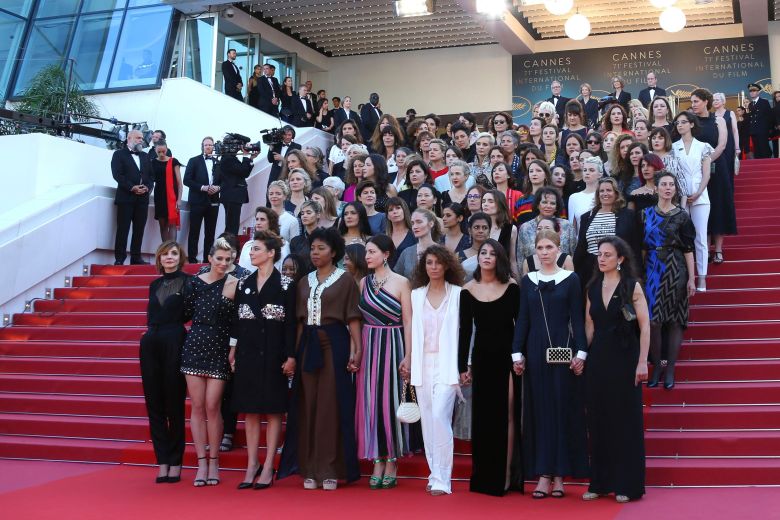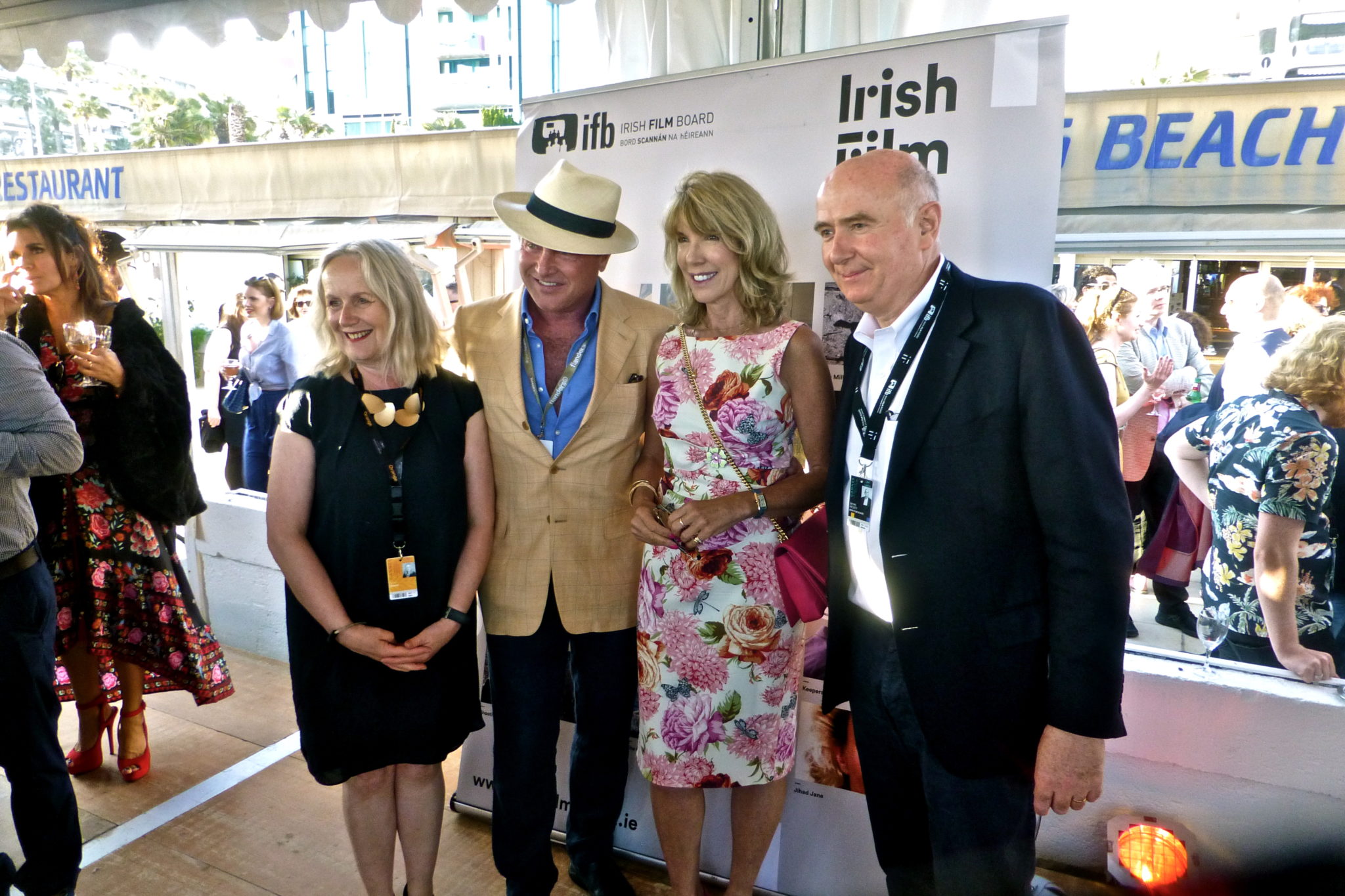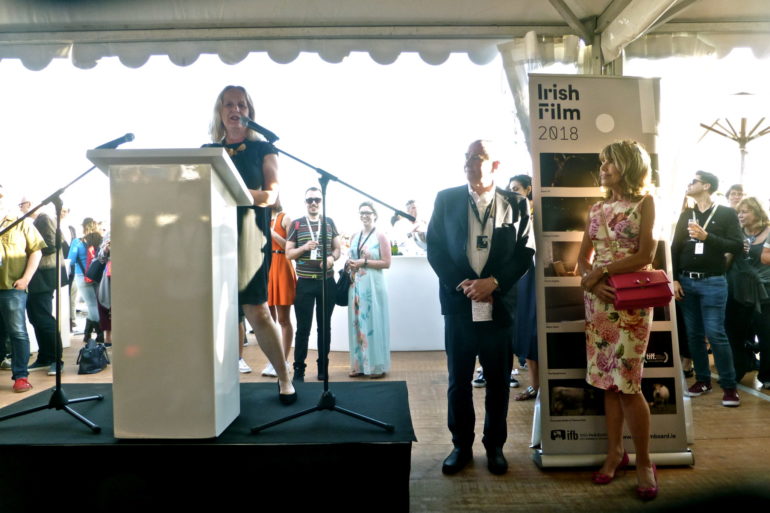In Cannes, Saturday night’s alright for politics, both on-screen and on the red carpet stairway to the Lumiere Theatre. This year, almost penitently, Le Festival decreed that Saturday’s stairway parade would consist of only women. 82 of them in fact, in reference to the total number of women directors to have competed since 1946 in contrast with 1,866 men. The agenda-setting new title of the movement is 50/50 by 2020, succinctly replacing a global grievance with a measurable objective. In many ways it was Cannes playing catch up with its oft observed deficits in gender equality stats. In fairness to France, however, other numbers quoted show that France has the highest rate of female filmmakers. And, the name of Alice Guy is now spreading far and wide as not only the first woman director but the first person to pioneer the use cinema to tell dramatised stories. Before it became a boy’s game.
A towering Cate Blanchett stood beside the diminutive Agnes Varda to read the proclamation in English and French before the assembled 82, arranged almost as military cohorts evenly spaced on the steps below them. Though not as elegant as the usual red carpet peacocking, it was a powerful statement of intent on what has emerged from what is now sometimes referred to as H for Harvey day. Indeed up to this year, H was arguably the most influential person in Cannes, like with the Oscars, ensuring film selections and canvassing for prizes. Some are even grateful to him, for it is his poisonous power addiction and downfall that has turbo-charged the pre-existing 50/50 movement.

Eighty two film industry professionals stand on the steps of the Palais des Festivals to represent, what they describe as pervasive gender inequality in the film industry, at the 71st international film festival, Cannes, southern France, . Since the Cannes Festival was created, 82 films directed by women have been included in official competition, whilst 1,645 films directed by men were selected
Following the declarations, the gala film, Girls of the Sun by Eva Husson, was also a story of revolted women reverting to military formation to combat seemingly overwhelming odds. It tells the story, often referred to in the news and documentary these days, of Kurdish women taking up arms in Syria to fight off ISIS. Alongside her Kurdish sisters Golshifteh Farahani, smouldering like burning coal, wore the trademark vivid headscarf and battle fatigues as Husson assembled the predictably strong ingredients of women in a war torn theatre, murder, mayhem and rape. Perhaps it was inevitable that the film garnered a 10-minute standing ovation at the end of its gala screening, despite not fulfilling cinematic expectations. Meanwhile at the parallel and subsequent press screenings, critics were almost unanimously shaking their heads in bemused disappointment at the films artlessness. At almost every technical level from wooden expository dialogue through to heavy-handed scoring, the film failed to grip. The ingredients were there for a great story, but the flavours did not fuse in any intriguing way and the sauce simply separated between liquid and lumpy. But, just like the Harvey badness leading to a harder analysis of the underlying problems the films shortcomings hasten the agenda forward: the importance of women (just like men!) making better, more satisfying, films is the primordial objective of cinema.

The Irish industry has already begun to deal with this fraught issue of ensuring quality while imposing egalitarian gender quotas, realising that the proof of the pudding is in the box-office stats and the critical acclaim. So in a timely way, a few minutes along the Croisette, at its traditional Saturday evening Long Beach venue, the Irish industry were celebrating Irish cinema with their international colleagues and underlining their commitment to gender equality that has become active policy in recent years. As IFB Chairperson Annie Doona and the Board’s predominantly female staff have underlined before, it is not enough to hand out public funds on a 50/50 basis, but it is also necessary to ensure the upstream measures that best guarantee the artistic and entertainment qualities to justify this. On a flying visit between Brexit damage limitation duties, Irish Ambassador to Paris, Patricia O’Brien, reiterated to Scannain her commitment to matters cultural, and especially cinema, as a way to give Irish artists greater opportunities and to project our identity while enhancing relations with our European neighbours. France and Ireland have the highest per capita cinema attendance rates. Both love going to the pictures. If Irish filmmaking could also take inspiration from France’s high box-national market share and their high ratio of women film directors that too would be progress.

